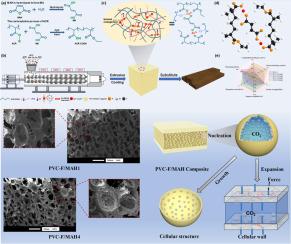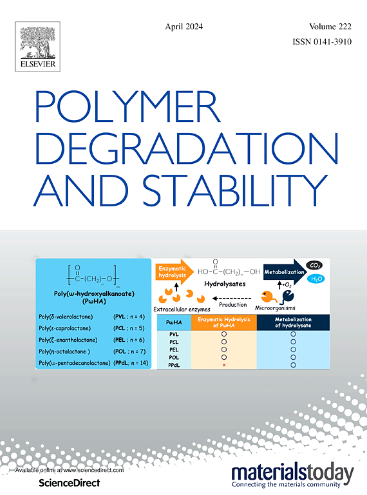The effects of ACR/MAH ionic cross-linking on the cell morphology, mechanical properties, and dimensional stability of PVC foams
Abstract
This study details a novel approach to enhance the dimensional stability of foamed polyvinyl chloride (PVC) materials through the introduction of a reversible cross-linking network. This is achieved via the carboxylation of acrylate polymers (ACR) utilizing the hydrolysis reaction of maleic anhydride (MAH) during the extrusion of PVC foam sheets. Subsequently, an ionic cross-linking network is formed using calcium-zinc (Ca-Zn) stabilizers. This paper elucidates the process of cell formation and the mechanisms underpinning the ACR/MAH ion network formation. Cell morphology of the foamed PVC was characterized using SEM, and the effects of ionic cross-linking on the plasticizing time, dimensional stability, and mechanical properties were analyzed through cell diameter distribution measurements and rheometry. The longitudinal and transverse dimensional shrinkage of PVC-F/MAH1 was reduced by 28.0 % and 28.9 %, respectively. The construction of the ACR/MAH ion cross-linking network not only augments the mechanical properties but also substantially enhances the dimensional stability of the material. This approach underscores the viability of ion cross-linking networks in advancing the performance parameters of PVC foams, suggesting a promising avenue for future research and development in polymer processing technology, and potentially expanding their application spectrum.


 求助内容:
求助内容: 应助结果提醒方式:
应助结果提醒方式:


